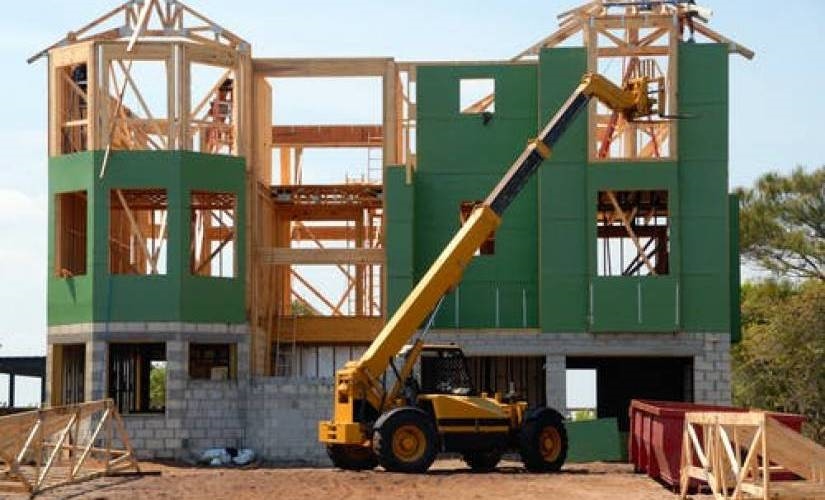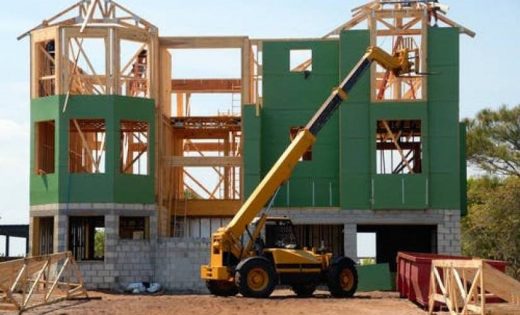3D Printing: 10 Ways it Could Transform the Construction Industry
3D Printing: 10 Ways it Could Transform the Construction Industry

3D printing, or additive manufacturing as it’s sometimes called, is poised to vary the planet as we all know it. Many have hailed the technology because of the coming of the third technological revolution. 3D printing viably puts the help and making of a decent kind of goods and products inside the hands of anybody that claims a 3D printer. Here are ten ways 3D printing could transform the construction industry.
Technology has the best chance of impact within the fields of producing, development, and architecture.
Designers and designers can now 3D print items out of materials like masonry, concrete, and even wood — and let’s not forget MASKS — during this COVID-19 problem.
A 3D digital model of the item is made of CAD (CAD) or employing a 3D scanner. The printer at that point peruses the arranging and sets down successive layers of the printing medium, which are joined or melded to make the thing. The method is often slow, but it enables almost any shape to be created.
3D Printing in the Construction industry
In the construction industry, 3D printing is often wont to create construction components or to ‘print’ entire buildings. Development is appropriate for 3D printing. The most extreme measure of the information important to make a thing will exist because of the arranging procedure.
In this manner, the market is, as of now experienced to help to manufacture. The ongoing rise of building data displaying (BIM) particularly may encourage more prominent utilization of 3D printing.
Transparency Market Research delivers key insights on the worldwide 3D printing in the construction market is predicted to witness a ten-fold growth during the forecast period and reach a worth of US$ 280 Mn by 2027 from a modest market price of US$ 29 Mn in 2019.
The 3D printing technique increases to create residential, commercial, and industrial buildings. As an example, in 2015, Winsun Decoration Design Engineering, a corporation based in Shanghai, built around ten residential houses in 24 hours. The company is to disclose the value of making each house was US$ 5,000.
The roadmap for using 3D printing in construction is being laid down in Dubai, wherein the Prime Minister of the United Arab Emirates announced that around 25% of the city’s new buildings would be built using 3D printers by the top of 2025.
Know Various Technologies used in 3D printing in Construction
To start talking about Additive Manufacturing applications for construction, it should always first have a glance at the available technologies; then It will discuss the benefits. Right now, this could be a couple of options to use 3D printing within the housing industry.
1. Robotic Arm Extruders
One of them may be a robotic arm extruder; this technology is named contour crafting. it’s fairly almost like how FDM desktop 3D printers work. The rails are arranged to let the robotic arm move. The arm will build the house layer by layer by extruding concrete material from the nozzle. The system is often the foremost reason popular 3D printing technology wants to build XL structures.
2. Sand 3D Printing
The next 3D technique is more almost like industrial 3D Printing like SLS or Jet Fusion. The pioneer who tested it’s the Italian architect Enrico Dini, who built his D-Shape 3D printer. The machine spreads a layer of sand powder, then hardens the form of the structure with a binder. The process is exactly how our metal 3D printers work too.
3. Metal Technology
Last but not least, for structures like bridges, which need to withstand more stress, Dutch company MX3D developed Wire Arc Additive Manufacturing (WAAM). The group portrayed the innovation: A mechanical robot with a welding machine to show it into a 3D printer that works with our own product. The robot takes into consideration 3D printing metal structures in 6-axis.
10 Advantages of 3D Printing for Construction
Considering the competitive nature of the development industry, 3D printing offers contractors an innovative thanks to set themselves aside from their competitors. To prove now, here are ten advantages that employing a 3D printer could give to the development field
1. Reduced Injury
One of the most significant advantages that 3D printers have introduced to development laborers might be a decrease in wounds inside the field. Considering that building with concrete is difficult—even dangerous—this may be an improvement.
Not only do workers have a neater time doing their job, but employers have less worker’s compensation paperwork to go through thanks to injuries on the work.
2. Reduced Material Costs
Another improvement may be a considerable reduction of fabric waste. 3D printers use the precise amount of concrete needed for the wall, floor, or whatever it’s that you simply want to create.
Builders and GCs do not have to order in bulk because they’ll know exactly what proportion of material they have. Not only is this a more sustainable, environmentally friendly building, but it also leads to reduced costs for the contractor.
3. Quicker Construction
Relying on faster construction is where concrete 3D printers truly set themselves aside from traditional construction methods. 3D printers can complete a task with one hour or days. Before, it takes time for weeks or months to finish. Now an entire house built in 24 hours. A fast finish enables contractors to man oeuvre onto other projects soon and with more orders filled. The contractor then makes extra money.
4. Crowd-Sourced Printing
Similar to software-as-a-service, as printers become more accessible, a spread of companies and make will happen that allow anyone and everybody to print from a service-based system. It’s easy to ascertain how this may transform retail and regular shopping channels.
It could potentially print any item. It will think up then pick it up from a printer or service center. Does the planet actually need more stuff? That’s a legitimate question. But it might be useful in construction and architecture, specifically when it involves design.
With 3D printing, one feeds a digital blueprint or file of the specified item into hardware. Almost anyone can design or create this file.
3D printing files and blueprints are now changed into digital versions. Presently, consider something comparative aside from on the way more terrific scope, and with private and business property outlines.
5. Dynamic Players
The crowd sourced scenario also reveals something of a shift within the industry’s primary players. The digital development economy will create all alone, with scarcely any knowledge from current experts. Meaning workers within the construction, engineering, and style industries will have to redefine their roles and find new uses for their skills.
That’s not to say traditional construction and development will disappear overnight. However, It will expect construction to evolve, especially once organizations and teams realize how efficient and cost-effective 3D printing is often.
New business opportunities arise and assessed. We all know of the typical contractor change radical over time.
6. Cheaper Construction
Overall, the utilization of 3D printers’ costs but traditional construction techniques and processes. With the decrease of wounds, time, and material costs, organizations will see a sensational increment in their benefits.
And while some workers will probably need to be abandoning, others will remain, since someone still must be ready to put all of the pieces together. By learning the technology, workers have an opportunity to take care of their job security also. They’ll earn more, as will the corporate as an entire.
7. Commercial Development
It’s anything but difficult to excuse 3D printing as a private or littler scope activity, yet that is not the situation. Dubai recently announced the completion of the world’s first 3D-printed office block. it’s a full-scale, commercial office block with people actually working and operating within. The commercial development then takes the idea, model and it’s done — not a mere figment of someone’s imagination.
The takeaway is that 3D printing advancements will be practical across each aspect of the improvement business, including business and private.
8. Improved Form
3D printers are able to make odd and atypical design structures. Now construction companies can utilize that to supply their clients’ unique buildings designed entirely for them. this will open up their portfolio to certain individuals who might not want the quality rectangular options.
9. Better Durability
3D printers are found to contribute to the sturdy of the structural elements in the first stages of construction. More durable buildings are fewer repairs got to made, and construction companies can focus their efforts to drive profit. For clients, too, their preferences certainly rest with a building which will last longer.
10. Brand Improvement
Finally, one of the foremost important impacts that the 3D printer has had—and will still have—on the development industry is increased brand awareness. Now construction companies are thinking of wasteful and unsustainable.
Future of 3D Printing for Construction
As we see, there are numerous advantages to utilizing 3D printing inside the construction business, and consequently, the organizations utilizing it as of now are fruitful. 3D technologies help to manage the entire production process, from the first stages of the project to supply it.
3D printed structures now available at regular cost and time. They are far more eco-friendly because of almost zero material waste.
But besides these incredible experiments pushing the boundaries of the technology. It will access some amazing technologies like SLS to make this next architectural model. It is developed with mock-ups and construction projects.
Innovations that Additive Manufacturing bring are available not only within the construction industry but it will also improve production today. Improving production will provide different 3D printing technologies, from plastic 3D printing to resin 3D printing and metal. Don’t wait for competitors to try to do this; bring this cutting-edge technology to business today.
Image Credit: pexels.com
The post 3D Printing: 10 Ways it Could Transform the Construction Industry appeared first on ReadWrite.
(14)


